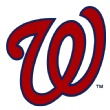The baseball industry, media and fans will be rightly obsessed with what happens in Wrigley Field and Miller Park Sunday, with what happens in Coors Field, with what happens with the Dodgers. For most baseball evaluators, however, the 2018 season is over. They have moved on to future questions.
Early last October, an executive with a team not participating in the postseason asked an honest question: "I've been in meetings all week -- what's going on in the playoffs?" Wrapped in the cocoon of future quests, he had no idea what had happened in the outside world.
For 10 teams, the dreams of a championship are still alive on this last day. For the rest, however, plans and decisions for 2019 (and beyond, in some cases) are already in the works. For example: The Giants let Bobby Evans go as their general manager last week and are theoretically early in their process of finding new front-office help, but according to rival executives, they have been evaluating alternatives for weeks.
Some key decisions ahead for some of the clubs that won't share in the postseason:
 Washington Nationals: Bryce Harper seems fully prepared to move on to another team, based on his words and actions in these last days. But the Nationals have a long history with Harper's agent Scott Boras, and they should understand better than most teams that Harper is probably going to the club that makes the most significant offer. They also know that Boras tends to let bidding percolate deep into the winter.
Washington Nationals: Bryce Harper seems fully prepared to move on to another team, based on his words and actions in these last days. But the Nationals have a long history with Harper's agent Scott Boras, and they should understand better than most teams that Harper is probably going to the club that makes the most significant offer. They also know that Boras tends to let bidding percolate deep into the winter.
After a disastrous 2018 season, the Nationals really can't afford to wait around for Harper's situation to play out. They should prepare their last, best offer to Harper relatively early in the offseason, and if they get the sense that it won't meet the expectations of Team Harper, then they should move on and restructure next year's club around Max Scherzer, Juan Soto, Anthony Rendon and Trea Turner. The worst-case scenario for the Nationals would be to wait and wait and wait and bypass opportunities during that wait -- as the Astros did with free agent Carlos Beltran after the 2004 season -- and then be left to scramble if the player signs elsewhere.
 San Francisco Giants: The Giants' ownership should study the remarkable parallels between their franchise and the Philadelphia Phillies teams of a decade ago. A core of homegrown players appears repeatedly in the World Series; the front office, in an effort to extend the window of success, extends the financial obligations to postseason heroes; the core of the team fades, through injury and age, and the fall is precipitous.
San Francisco Giants: The Giants' ownership should study the remarkable parallels between their franchise and the Philadelphia Phillies teams of a decade ago. A core of homegrown players appears repeatedly in the World Series; the front office, in an effort to extend the window of success, extends the financial obligations to postseason heroes; the core of the team fades, through injury and age, and the fall is precipitous.
Those Phillies made the choice to give a massive contract to a young left-hander of those championship years, Cole Hamels -- and within two years, the front office looked to dump the contract and recoup at least some of his value in trade. The Phillies had to eat some of Hamels' deal to make that trade happen. So with a restructuring of the Giants' big league team now imminent -- maybe even a full rebuild -- the Giants should not make the same mistake with Madison Bumgarner. They should market him in possible trades as the much less expensive alternative to Patrick Corbins and Dallas Keuchels on the free-agent market, and of course, as an endangered species: the Paul Bunyan starting pitcher capable of carrying a team through October.
 San Diego Padres: Their signing of Eric Hosmer last winter and their flirtation in the summer trade market suggests that ownership is growing impatient with their slow, steady rebuilding process, so you would assume they will be aggressive this winter. With the benefit of 20-20 hindsight, it's apparent that the Hosmer deal was a colossal mistake -- too much money squandered at the wrong time. As the Padres look for a pitcher to build around, they cannot afford to make a similar gaffe, because their margin for error as a mid-market team is very thin. They cannot be wrong about which guy, at which price.
San Diego Padres: Their signing of Eric Hosmer last winter and their flirtation in the summer trade market suggests that ownership is growing impatient with their slow, steady rebuilding process, so you would assume they will be aggressive this winter. With the benefit of 20-20 hindsight, it's apparent that the Hosmer deal was a colossal mistake -- too much money squandered at the wrong time. As the Padres look for a pitcher to build around, they cannot afford to make a similar gaffe, because their margin for error as a mid-market team is very thin. They cannot be wrong about which guy, at which price.
 New York Mets: Club ownership decided to hold the starting pitcher group together, and Jacob deGrom, Noah Syndergaard and Zack Wheeler will be back, apparently. But now that they've committed to that course of action, the Mets have to spend the money to add the right complementary position players -- a right-handed hitting outfield thumper, for sure, because Yoenis Cespedes' time as an impact player may be over.
New York Mets: Club ownership decided to hold the starting pitcher group together, and Jacob deGrom, Noah Syndergaard and Zack Wheeler will be back, apparently. But now that they've committed to that course of action, the Mets have to spend the money to add the right complementary position players -- a right-handed hitting outfield thumper, for sure, because Yoenis Cespedes' time as an impact player may be over.
 Philadelphia Phillies: It's a given among rival executives that they're going to go all-in on big-ticket free agents like Manny Machado and Bryce Harper. But the Phillies' front office needs to assess what happened in the last seven weeks of the regular season, when the team flatlined to a degree that the sport has never seen before: They were just not competitive, with their four-game trip through Colorado last week standing out as the worst of it. Was this just a blip? Was it the case of a young team tiring? Is there something tangible that must be addressed?
Philadelphia Phillies: It's a given among rival executives that they're going to go all-in on big-ticket free agents like Manny Machado and Bryce Harper. But the Phillies' front office needs to assess what happened in the last seven weeks of the regular season, when the team flatlined to a degree that the sport has never seen before: They were just not competitive, with their four-game trip through Colorado last week standing out as the worst of it. Was this just a blip? Was it the case of a young team tiring? Is there something tangible that must be addressed?
 St. Louis Cardinals: The second-half ascension of manager Mike Shildt and their young pitchers gives St. Louis a nice step forward into 2019, but the front office is again faced with questions about how functional this group is defensively. Keep this in mind: Last winter, the Cardinals were more than willing to take on the record-setting contract of slugger Giancarlo Stanton in a deal with the Marlins, but Stanton preferred to play elsewhere. So if St. Louis is ready to spend the money -- and seemingly, it is -- than a long-term investment in Manny Machado as a third baseman (where he excels defensively) makes a lot of sense. He'd make their offense better; he'd make their defense better; and by extension, he'd make their pitching better.
St. Louis Cardinals: The second-half ascension of manager Mike Shildt and their young pitchers gives St. Louis a nice step forward into 2019, but the front office is again faced with questions about how functional this group is defensively. Keep this in mind: Last winter, the Cardinals were more than willing to take on the record-setting contract of slugger Giancarlo Stanton in a deal with the Marlins, but Stanton preferred to play elsewhere. So if St. Louis is ready to spend the money -- and seemingly, it is -- than a long-term investment in Manny Machado as a third baseman (where he excels defensively) makes a lot of sense. He'd make their offense better; he'd make their defense better; and by extension, he'd make their pitching better.
 Seattle Mariners: They've been more competitive in recent seasons, and general manager Jerry Dipoto and manager Scott Servais got contract extensions. Dipoto has worked like crazy to improve the big-league team in recent years, but with Felix Hernandez 's greatness now a part of their past and Robinson Cano about to turn 36, they must focus on the next generation of Mariners; they have to get younger, and should not spend resources to prop up the club with short-term fixes.
Seattle Mariners: They've been more competitive in recent seasons, and general manager Jerry Dipoto and manager Scott Servais got contract extensions. Dipoto has worked like crazy to improve the big-league team in recent years, but with Felix Hernandez 's greatness now a part of their past and Robinson Cano about to turn 36, they must focus on the next generation of Mariners; they have to get younger, and should not spend resources to prop up the club with short-term fixes.
 Toronto Blue Jays: A hard assessment should be made on starting pitchers Aaron Sanchez and Marcus Stroman, with the Blue Jays' evaluators asking: Do we believe they are going to be markedly better in 2019? Stroman had a 5.19 ERA last season, Sanchez 4.89, with both eligible for free agency after the 2020 season. If the answer is yes, then they should keep one or the other or both through the first part of 2019, in the hope that they improve and rebuild trade value for next summer's market. If not, this winter might be the best time to move on -- particularly with Stroman, whose frustration can be on display for everybody to see. For the next manager, for a rebuilding team, it might be better to move Stroman to his next challenge.
Toronto Blue Jays: A hard assessment should be made on starting pitchers Aaron Sanchez and Marcus Stroman, with the Blue Jays' evaluators asking: Do we believe they are going to be markedly better in 2019? Stroman had a 5.19 ERA last season, Sanchez 4.89, with both eligible for free agency after the 2020 season. If the answer is yes, then they should keep one or the other or both through the first part of 2019, in the hope that they improve and rebuild trade value for next summer's market. If not, this winter might be the best time to move on -- particularly with Stroman, whose frustration can be on display for everybody to see. For the next manager, for a rebuilding team, it might be better to move Stroman to his next challenge.
 Detroit Tigers: With Victor Martinez's career over, the Tigers can now commit to making Miguel Cabrera their full-time DH, to extract whatever production remains in his career. Cabrera was once one of baseball's great ironmen, someone who could be counted on to play every day, but in the last four years, he's missed 203 games. He's got five years and at least $154 million remaining on his contract, making him all but immovable in trade, and he demonstrated with his .395 OBP in 38 games in 2018 that he can still hit. But the only way the Tigers can glean return on his contract moving forward is if he plays, and he needs to be at peace with the idea that he will be a DH.
Detroit Tigers: With Victor Martinez's career over, the Tigers can now commit to making Miguel Cabrera their full-time DH, to extract whatever production remains in his career. Cabrera was once one of baseball's great ironmen, someone who could be counted on to play every day, but in the last four years, he's missed 203 games. He's got five years and at least $154 million remaining on his contract, making him all but immovable in trade, and he demonstrated with his .395 OBP in 38 games in 2018 that he can still hit. But the only way the Tigers can glean return on his contract moving forward is if he plays, and he needs to be at peace with the idea that he will be a DH.
 Cincinnati Reds: Dick Williams, the head of baseball ops for the Reds, has made it clear that the team will have some money to spend, and given the club's ranking of 24th in ERA, it's no secret that their greatest need is for pitching. But the reality is that no high-end free-agent pitcher will want to sign with the Reds, because of the ballpark; the Reds would probably have to overpay to lure someone like a Corbin or a Keuchel, if that was the route they took.
Cincinnati Reds: Dick Williams, the head of baseball ops for the Reds, has made it clear that the team will have some money to spend, and given the club's ranking of 24th in ERA, it's no secret that their greatest need is for pitching. But the reality is that no high-end free-agent pitcher will want to sign with the Reds, because of the ballpark; the Reds would probably have to overpay to lure someone like a Corbin or a Keuchel, if that was the route they took.
The Reds are actually perfect candidates to try to replicate the Rays' strategy of openers followed by a reliever army. This winter, there will be plenty of relief alternatives in the free-agent market, from the pricier options like Andrew Miller down to others who will command one- or two-year deals. It could make sense for the Reds to go this way, not only to give themselves a better chance to compete but also avoid the long-term financial risk of a big-money starting pitcher.
And today will be better than yesterday.
